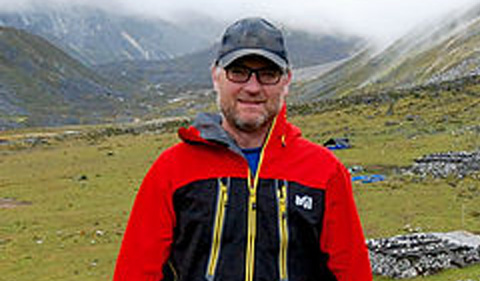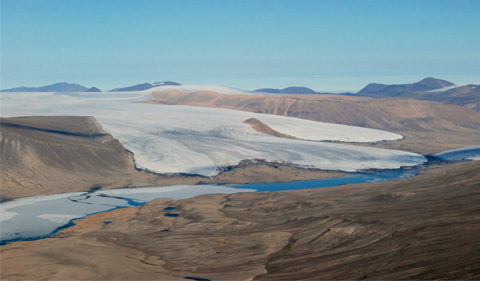
Joel Barker
The Geological Sciences Colloquium Series presents Joel Barker on “What’s old is new again: Using Arctic mummified forests to predict climate” on Oct. 13 at 4:10 pm in Clippinger 205.
Barker is an Assistant Professor in the School of Earth Science at The Ohio State University.
Abstract: The climate that existed during the Pliocene epoch is within the range of climatic conditions that are predicted for the end of the 21st century. Mummified paleoforests, those ancient forests where the flora are not silicified but instead preserved in a desiccated state, provide the opportunity to infer specific environmental conditions at annual or seasonal resolution, thereby providing a high-resolution record of climate during the time that the tissue was created. The presence of Pliocene mummified paleoforests in the high Arctic, at latitudes well above modern day treeline, suggests that the response of terrestrial vegetation to future climate may be dramatic and that Arctic ecosystems were, and might become, very different from those that we observe today.
Here, I describe a mummified paleoforest deposit on Ellesmere Island, Canada. This deposit is the most northerly reported to date, and exhibits a floral composition that differs from deposits located elsewhere in the Canadian Arctic archipelago. The existence of this deposit permits both an extension of the paleo-arctic treeline to a more northerly latitude, and insight into Arctic environmental conditions present during the Pliocene, and potentially, in the near future.

Upcoming Colloquia
Kevin Mueller of Cleveland State University on “Using plant traits to understand biosphere functions and environmental change: lessons from studies of living plants” on Oct. 20 at 4:10 pm in Clippinger 205.
Peter Jahl on “Modifying and Producing Exoplanetary Interior Models for Local Stellar Systems” and Jack Seeley on “Optical and X-Ray Diffraction Analysis of Shock Metamorphosed Knox Group Dolostone from Wells Creek Crater, TN (Part II)” on Oct. 27 at 4:10 pm in Clippinger 205. Both are Geological Sciences graduate students.
Joshua Miller of the University of Cincinnati on “Tracking ecological change through the Anthropocene and beyond: Insights for paleoecology and conservation biology from bones on the landscape” on Nov. 3 at 4:10 pm in Clippinger 205.
Michal Kowalewski of the University of Florida on “Tales Told by Dead Shells: Paleobiological Approaches to Historical Ecology and Conservation” on Nov. 8 at 2:00 pm in Walter Hall 235.
Kenneth Brown of West Virginia University on “Crystals as archives into Igneous systems and processes: exploring potassium feldspar megacrysts in granites and granodiorites” on Nov. 17 at 4:10 pm in Clippinger 205.
Lindsey Schafer on “Statistical analysis of mining parameters to create empirical models to predict mine pool formation in underground coal mines” and Fred Twumasi on “Modeling of hydrological data to predict mine pool formation and possible discharge locations in underground mines” on Dec. 1 at 4:10 pm in Clippinger 205. Both are Geological Sciences graduate students.



















Comments